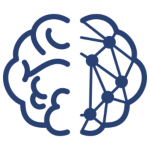- Tue 13 August 2019
- News
- Ankur Sinha
- #NEST, #Computational Modelling, #Modularity

After a bit of work and testing, NEST 2.18.0 and 2.16.0 are now both available for use on NeuroFedora. The docs have also been updated to include complete instructions on how to install and use these tools: https://docs.fedoraproject.org/en-US/neurofedora/nest/
Here are a few quick FAQs for your convenience:
Q: How do I use NEST on NeuroFedora?
It only takes two steps to install NEST using
dnf(the default package manager):
- Download and run (optionally install) a "live" Fedora Workstation image from https://getfedora.org
- Install NEST 2.18.0: Run
sudo dnf install python3-nestin a terminal.
Q: How do I use version 2.16.0?
2.16.0 is provided as a "module". To install the 2.16.0 version:
- Download and run (optionally install) a "live" Fedora Workstation image from https://getfedora.org
- Install NEST 2.16.0: Run
sudo dnf module install nest:2.16.0in a terminal.Please note that only one version of NEST can be installed at once.
Q: Does NEST in NeuroFedora include MPI support?
Yes---variants built with both MPICH and OpenMPI are available to use.
Q: Does NEST in NeuroFedora include libneurosim/MUSIC/CSA: support?
Not all of them yet.
- libneurosim: Yes
- MUSIC: No (under review: https://pagure.io/neuro-sig/NeuroFedora/issue/28)
- CSA: No (WIP: https://pagure.io/neuro-sig/NeuroFedora/issue/33)
Q: Where do I get help?
The NeuroFedora team maintains multiple communication channels for support and general discussion: https://docs.fedoraproject.org/en-US/neurofedora/communicating/
Q: What other tools does NeuroFedora provide?
The complete list includes neuron, auryn, PyLEMS, NineML and lots more: https://src.fedoraproject.org/group/neuro-sig
Fedora also includes more software that is not specific to computational neuroscience---such as productivity and development tools, a variety of desktop environments, server and container focussed editions, and other science related software:
NeuroFedora is volunteer driven initiative and contributions in any form always welcome. You can get in touch with us here. We are happy to help you learn the skills needed to contribute to the project. In fact, that is one of the major goals of the initiative---to spread technical knowledge that is necessary to develop software for Neuroscience.
